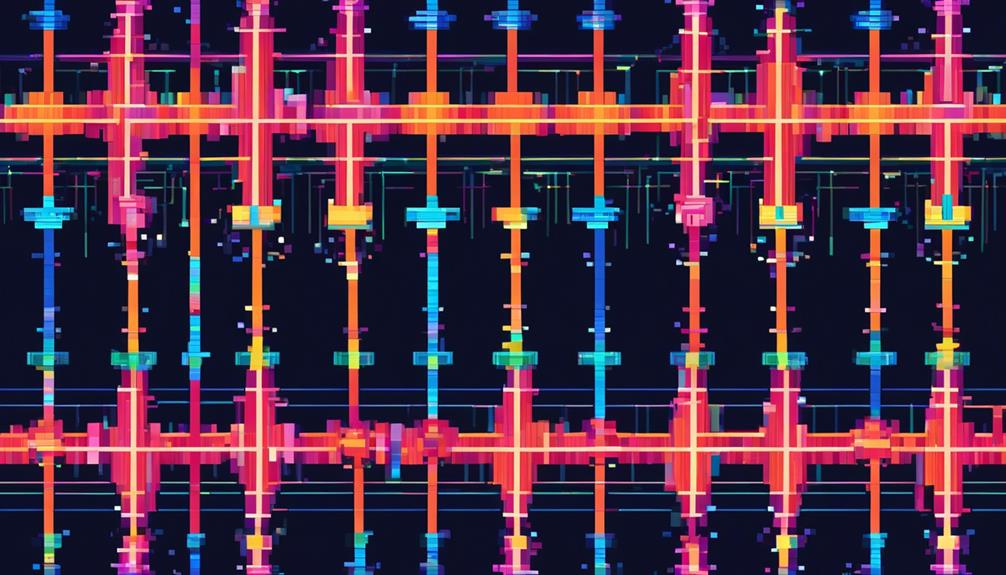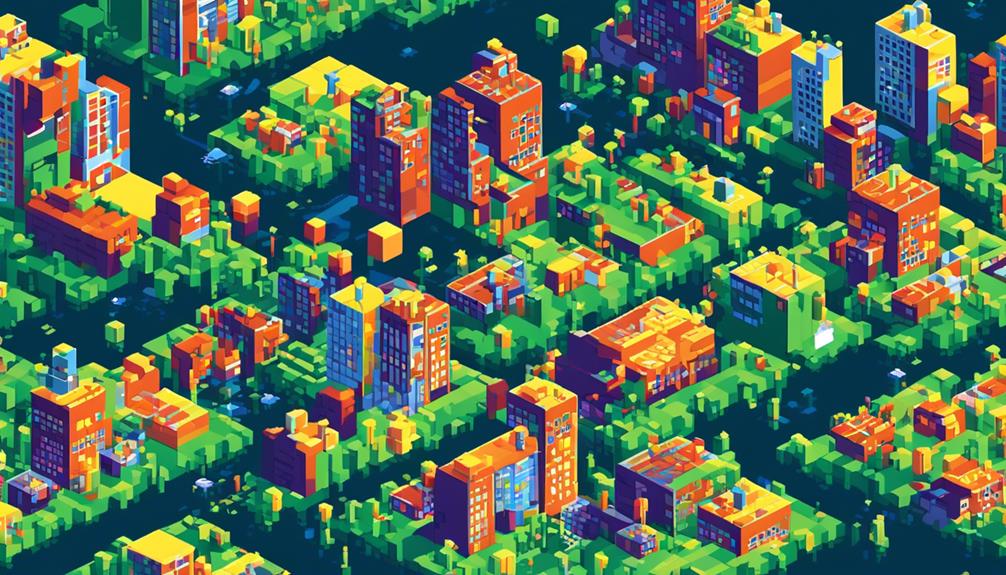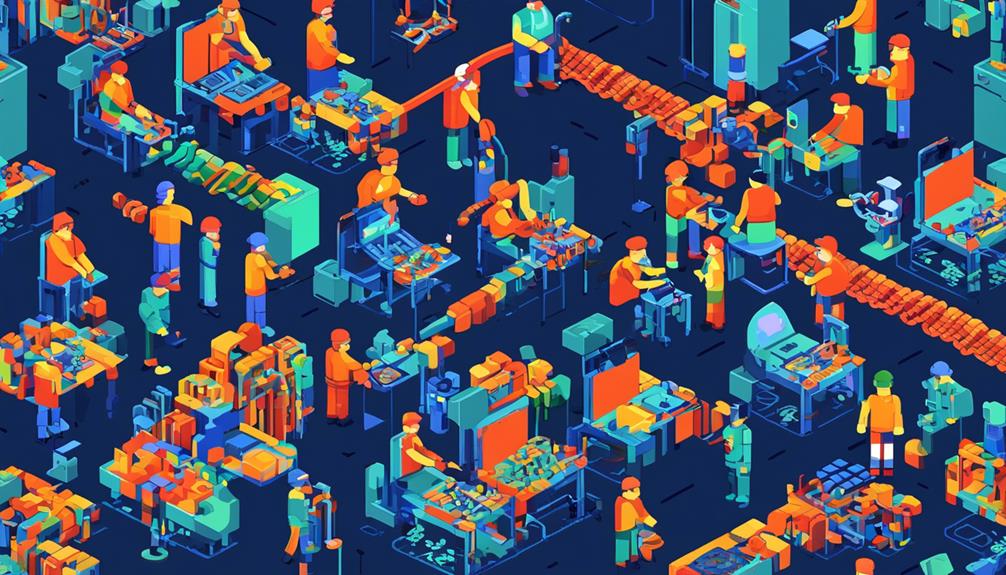As the telecommunications industry continues to grow and evolve, the importance of fiber optic cable recycling and sustainability becomes increasingly evident.
The adoption of fiber optic cables brings numerous environmental advantages, such as their use of silicon dioxide, a naturally occurring compound, and their minimal carbon footprint.
However, to ensure sustainable growth, it is crucial to go beyond the initial implementation of fiber optic technology and embrace eco-friendly practices throughout the entire lifecycle of these cables.
This includes manufacturing techniques that prioritize energy efficiency and the use of renewable energy sources, as well as the development of specialized knowledge and equipment for recycling fiber optic cables.
By exploring the possibilities of fiber optic cable recycling and sustainable practices, we take a step towards reducing electronic waste and minimizing the environmental impact of the telecommunications industry.
Key Takeaways
- Fiber optic cables have a longer lifespan compared to copper cables, leading to reduced electronic waste.
- Fiber optic cables have a minimal carbon footprint and save up to 80% of energy compared to copper cables.
- Fiber optics require less maintenance and offer high-speed data transfer, providing long-term cost savings.
- Sustainable approaches for fiber optic cables include using renewable energy sources for production and recycling the cables at the end of their lifespan.
Understanding Fiber Optic Cables

What are the key characteristics and advantages of fiber optic cables in terms of their construction, energy efficiency, lifespan, and disposal options?
Fiber optic cables, an integral part of fiber optic infrastructure, provide numerous advantages over traditional copper cables. The construction of fiber optic cables involves using silicon dioxide, a naturally occurring compound derived from abundant elements found on Earth. This makes them sustainable and environmentally friendly.
Fiber optic cables consist of a core, cladding, and protective coating. The core, made of high-quality glass or plastic fibers, is responsible for carrying the data in the form of light signals. The cladding, with a lower refractive index, helps to keep the light signals confined within the core, reducing signal loss. The protective coating protects the core and cladding from external factors, ensuring the longevity of the cables.
One of the key advantages of fiber optic cables is their energy efficiency. Unlike copper cables that transmit electrical currents, fiber optics use light signals to transmit data. This significantly reduces energy consumption and environmental impact.
Additionally, fiber optic cables offer a longer lifespan compared to copper cables, resulting in reduced waste and the need for frequent replacements.
When considering the disposal options for fiber optic cables, it is important to take into account their environmental impact. Assessing the condition of the cables is crucial in determining whether they can be recycled or if they need to be disposed of as hazardous waste. Recycling fiber optic cables is a sustainable option that helps to reduce waste and minimize environmental impact.
Environmental Advantages of Fiber Optic Cables
Fiber optic cables offer significant environmental advantages due to their use of light signals instead of electrical currents, resulting in a minimal carbon footprint and reduced energy consumption. Here are some key environmental benefits of fiber optic cables:
- Minimal carbon footprint: Unlike traditional copper cables, fiber optic cables do not produce electromagnetic fields or emit significant amounts of carbon dioxide during data transmission. This makes them more environmentally friendly and sustainable.
- Resistance to environmental factors: Fiber optic cables are made of glass or plastic, making them resistant to environmental factors such as temperature changes and moisture. This ensures their longevity and reduces the need for frequent replacements, further minimizing their environmental impact.
- Energy savings: Studies have shown that fiber optic cables can save up to 80% of energy compared to copper cables. The energy consumption of fiber optic cables is significantly lower due to the use of light signals, resulting in reduced carbon emissions.
- Reduced reliance on traditional energy sources: By using fiber optic cables, businesses and individuals can reduce their dependence on traditional energy sources. This not only helps to conserve natural resources but also promotes the use of renewable energy options.
- Long-term sustainability: Fiber optic cables have a longer lifespan than traditional copper cables, reducing the need for frequent replacements. This not only saves resources but also reduces the amount of waste generated from cable replacements.
Long-Term Benefits of Fiber Optics

The long-term advantages of utilizing fiber optics extend beyond the initial installation and offer significant benefits for maintenance, bandwidth capacity, energy efficiency, and cost savings.
Fiber optic cables, known for their sustainable and environmentally friendly properties, provide a number of advantages over traditional copper cables.
One of the key benefits of fiber optics is their reduced maintenance requirements. Unlike copper cables, which are susceptible to corrosion and degradation, fiber optic cables are made of glass or plastic fibers that are resistant to environmental conditions. This means that fiber networks require less maintenance and are more reliable over time.
Additionally, fiber optics have limitless bandwidth capacity, allowing them to transmit data over long distances without any loss of speed or quality. This makes fiber optics ideal for applications that require high-speed data transfer, such as video streaming and large file transfers.
Furthermore, fiber optics provide energy cost savings over time. Compared to traditional copper cables, fiber optics consume less power to transmit data. This reduction in energy consumption not only lowers electricity bills but also contributes to a more sustainable and environmentally friendly infrastructure.
Sustainable Approaches for Fiber Optic Cables
With its sustainable properties and reduced maintenance requirements, fiber optic cables pave the way for implementing eco-friendly approaches in the production and usage of telecommunications infrastructure.
Here are some sustainable approaches for fiber optic cables:
- Using renewable energy sources: Powering the production of fiber optic cables with renewable energy sources such as solar or wind helps reduce reliance on fossil fuels and contributes to a more sustainable production process.
- Minimizing material use and waste: Fiber optic cables require less material compared to traditional copper cables. By minimizing material use and waste during production, the environmental impact is reduced, and resources are conserved.
- Reducing electronic waste: Fiber optic cables have a longer lifespan compared to copper cables, reducing the need for frequent replacements. This helps in reducing electronic waste and its associated environmental impact.
- Optical fiber's minimal carbon footprint: Fiber optic technology has a minimal carbon footprint as it does not emit significant amounts of carbon dioxide during data transmission. This makes it an environmentally friendly choice for telecommunications infrastructure.
- Recycling: At the end of their lifespan, fiber optic cables can be recycled. Recycling involves separating the components of the cables and contacting specialized recyclers who can process and reuse the materials. Following recycling guidelines ensures that the materials are properly disposed of or repurposed, reducing waste and environmental harm.
Promoting Sustainability in Fiber Optic Infrastructure

Promoting sustainability in the infrastructure of fiber optic technology involves implementing various environmentally conscious practices and raising awareness about the economic and environmental benefits of fiber optics.
Fiber optic cables have gained recognition as a sustainable and environmentally friendly solution for transmitting data over long distances. Unlike traditional copper cables, fiber optic cables consist of thin strands of glass that transmit light signals, resulting in a minimal environmental impact.
The Telecommunications Industry Association (TIA) has played a crucial role in promoting sustainability in the fiber optic industry. The TIA has developed standards and guidelines that focus on energy efficiency and reducing the overall carbon impact of fiber optic infrastructure. These guidelines encourage the use of renewable energy sources to power fiber optic networks and promote the development of energy-efficient equipment.
One of the key advantages of fiber optic technology is its energy efficiency. Compared to traditional copper cables, fiber optics require less power to transmit data over long distances. This leads to significant energy cost savings and a reduced carbon footprint. Additionally, fiber optic cables have a longer lifespan and are more durable than their copper counterparts, resulting in fewer replacements and less electronic waste.
To further promote sustainability, it is crucial to enhance public awareness about the environmental and economic benefits of fiber optics. Educating individuals and organizations about the advantages of fiber optic infrastructure can encourage widespread adoption and contribute to long-term sustainability efforts.
Frequently Asked Questions
Are Fiber Optic Cables Environmentally Friendly?
Fiber optic cables are environmentally friendly due to their low energy consumption, long lifespan, and minimal environmental impact during production. Compared to traditional copper cables, fiber optics have reduced carbon emissions and energy usage. They also play a vital role in reducing carbon footprints in communication networks.
Innovations in sustainable fiber optic cable technology are continuously being developed, and recycling infrastructure is being established to reuse fiber optic cables in other industries. Environmental certifications are available for fiber optic cable manufacturers, ensuring their commitment to sustainability.
The future of sustainable fiber optic cable design looks promising.
Can Fiber Optic Cables Be Recycled?
Fiber optic cables can indeed be recycled, providing a sustainable solution for their disposal.
The recycling process involves separating the glass or plastic components from other materials, such as metal connectors.
This process minimizes the environmental impact and allows for repurposing options, such as using recycled materials for new cables or other products.
Efficient waste management and recycling infrastructure support the benefits of fiber optic recycling, contributing to a circular economy approach and the reusing of fiber optic materials.
Is Fibre Optic Cable Hazardous Waste?
Fiber optic cable is not considered hazardous waste under normal circumstances. However, it is important to handle and dispose of it properly to avoid any potential health risks.
Fiber optic cable disposal methods include recycling, reusing, or donating functional cables, while damaged or outdated cables may require recycling or hazardous waste disposal.
Improper disposal can have negative impacts on ecosystems. Regulations exist for handling fiber optic cable waste, and there are innovations in recycling methods.
Recycling fiber optic cables can provide economic benefits and potential uses for recycled materials, but challenges exist in the recycling process.
Public awareness and education about fiber optic cable waste are essential for sustainable disposal methods in the future.
What Would Happen if the Fiber Optic Cable Was Cut?
If the fiber optic cable was cut, it would have significant consequences on data transmission and communication networks. The repair process would be required to restore connectivity, which could result in costly downtime and potential disruptions to communication services.
Specialized equipment and safety precautions would be necessary during the repair process, highlighting the importance of trained technicians.
Additionally, regular maintenance of fiber optic cables is crucial to ensure uninterrupted internet connectivity and the reliability of data communication systems.

